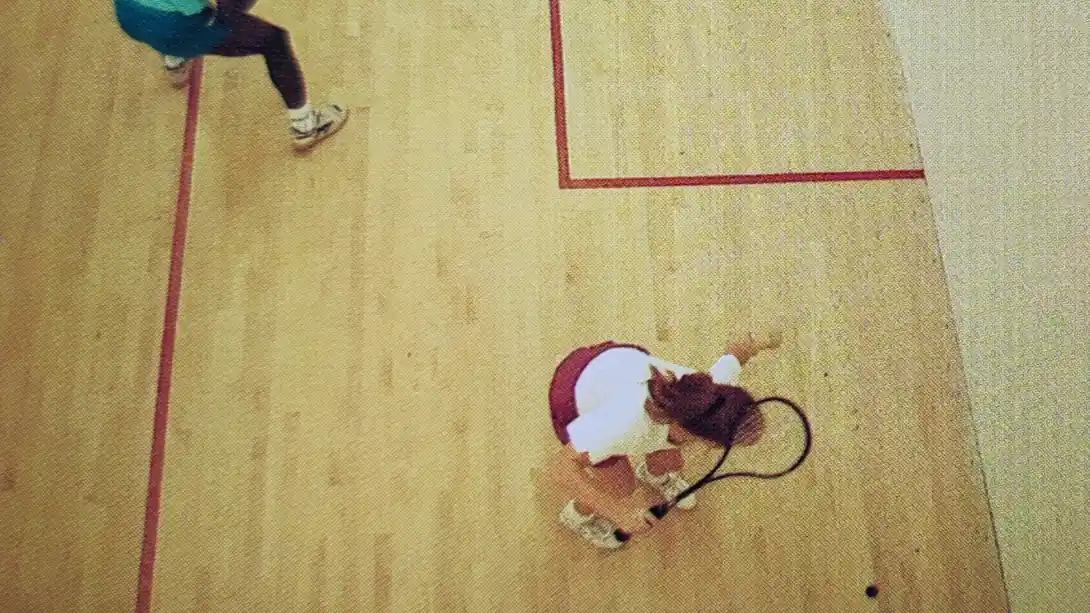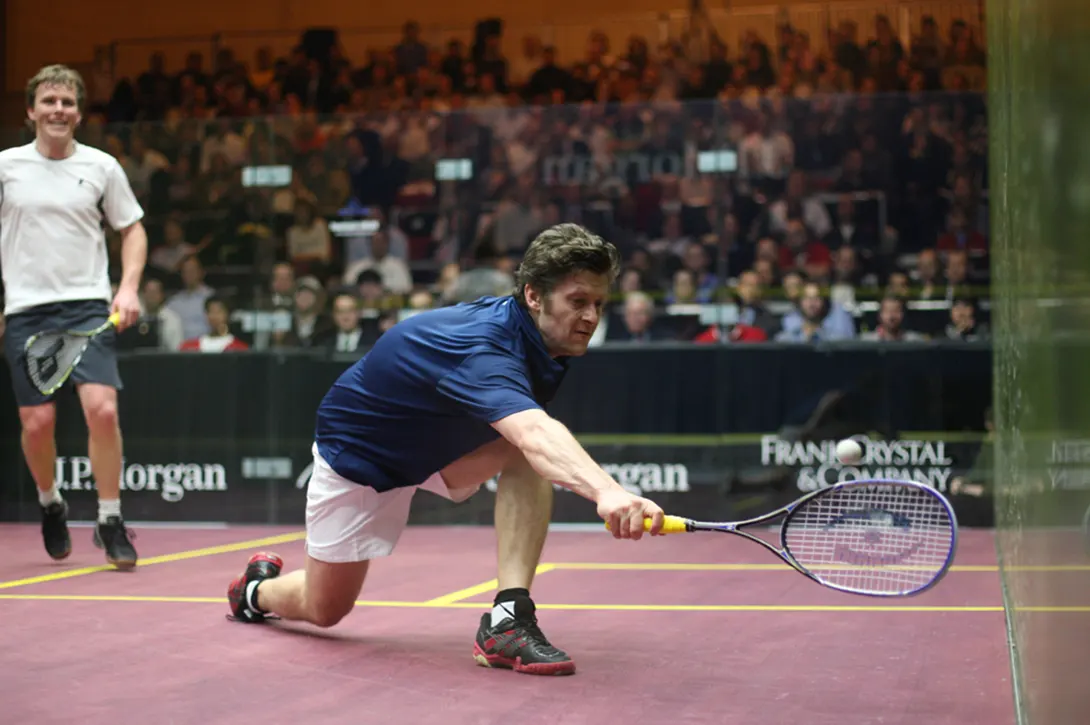16 October 2022 / 3-Min Read / Translate
This is another short article aimed at newer players who might be confused by the terminology used in squash. The phrase “Hit the ball off the back wall has two uses” and the results are completely different.
By the way, if you are a new player and are confused by any terms or phrases use in squash, just email me (email address at the bottom of this page) and I will help you. One last thing, when I get back on court, I’ll create some very short videos to embed in this article, showing the two meanings.

Here is a player hitting the ball after it has hit the back wall
In this case, the ball usually bounces on the floor and then hits the back wall and before the ball bounces twice, the striker (that’s the person who hits the ball) hits it. The striker will hit it either at the nearest side wall or the front wall. Let me just say that while it is possible to hit it at the other side one, the one further away from the point of contact, that would likely be dangerous as the ball would probably hit the non-striker.
The other possibility is that the ball hits the back wall directly, that is without bouncing. In this case, remember that you have to hit it before its SECOND bounce and that could easily be near the short line, so you have plenty of time. Situations like this occur with very high serves or lobs.
Both of the situations above can be a little difficult for newer players because the ball is moving towards the front wall instead of the back wall, meaning they are hitting the ball in the same direction it is moving, as opposed to the usual situation of the ball coming at them.
I have created a comprehensive video that explains how to develop the skills required to do this effectively. It’s embedded below.
Same phrase, almost opposite meaning! In this situation, your opponent has managed to hit the ball passed you. It will bounce twice before it touches the back wall, meaning you have to do something now! In this case, you actually try to hit the ball at the back wall. Yes, this is allowed as long as it hits the front wall eventually, before going out of course!
I couldn’t find any images of this type of shot, so I will create some as soon as I get back on court. The image below is clearly not of the same situation as I am describing, butt he hitting position is. It’s important to realise that if you are right-handed and on the right side of the court, you will actually hit a back-hand shot at the back wall.

Use this position to hit the ball at the back wall, but obviously in the opposite direction!
You won’t be moving around the ball to hit it because you won’t have time or space. Remember, the ball has passed you, so what would have been a forehand drive becomes a backhand shot.
Ideally, you want to hit the ball at a slight angle, so that it goes towards the opposite front corner. You do this for two reasons, one major, one minor. The major reason is that due to the way the ball spins, when it hits the front wall it will actually stay parallel to the side wall, meaning you defensive shot could have just turned into a hard shot for your opponent to return – good job you!
The minor reason is that it will travel slightly further, giving you slightly more time to recover to the T. try to get the shot as high as you can to give yourself the best chance of staying in the rally. You can practice this shot on your own, but it will take some practice to get the speed right. Hit you first shot at the back wall and move forward to the front. then hit a straight drive to the corner, but not too hard. Run back and hit the ball at the back wall. if you do the back wall shot at the angle I suggest, you should switch from side to side.
Experienced players and coaches can easily forget the confuse, doubt and strangeness they felt when they first started. Questions like the title of this article, can seem so obvious or even silly, that answer them is a waste of time. I don’t believe that. The chances are that if one player has asked a question, then others probably have too.